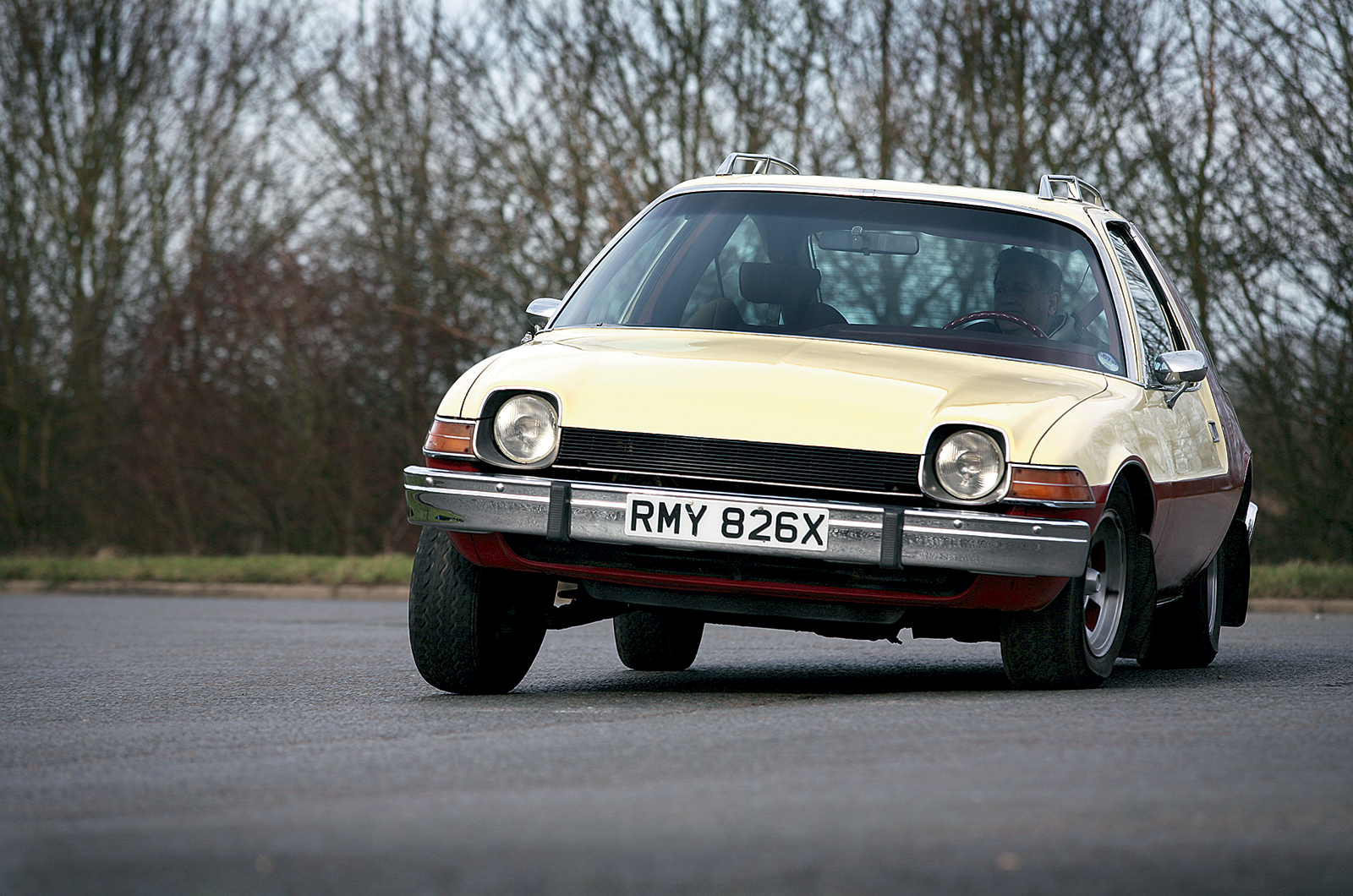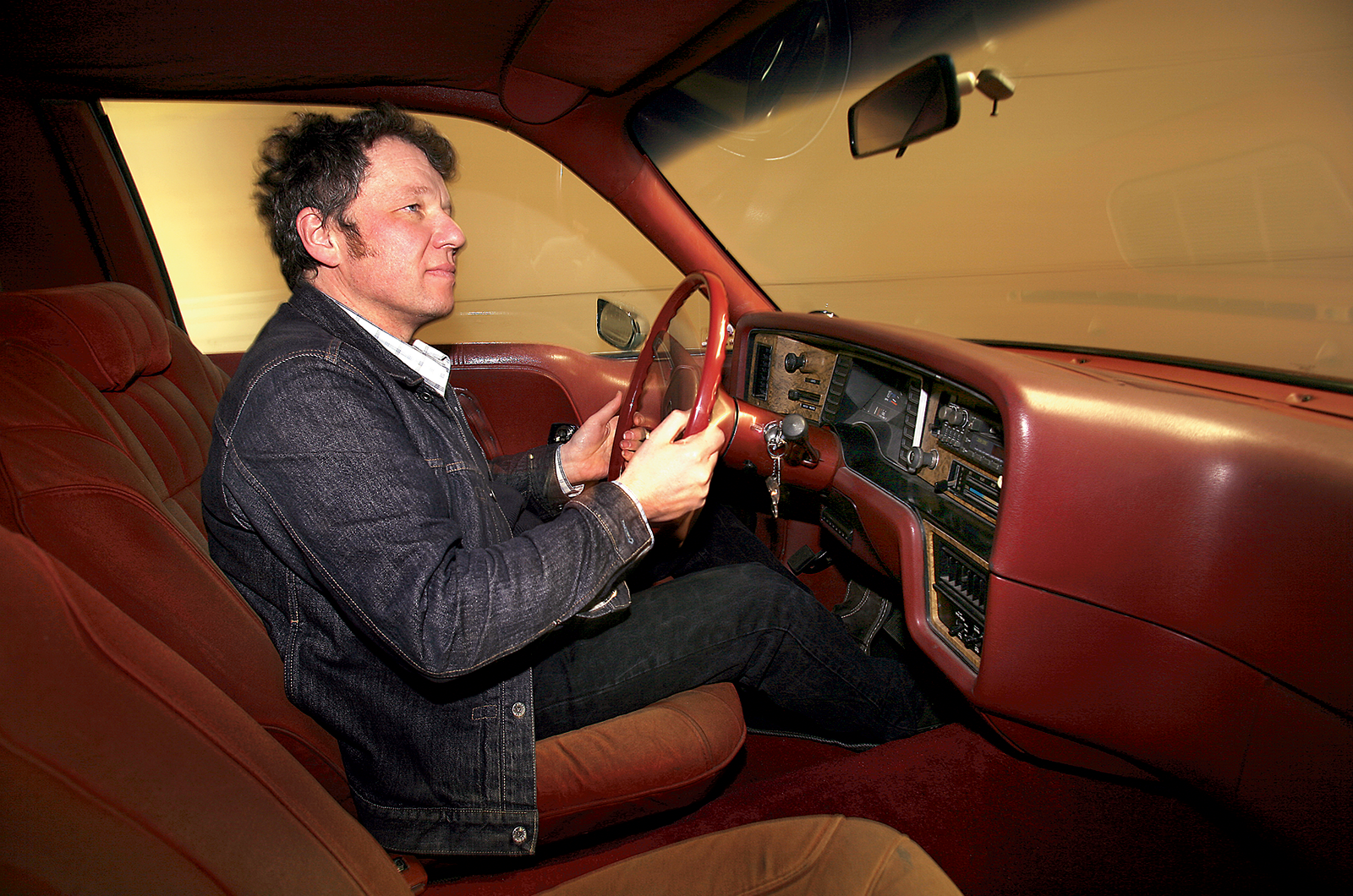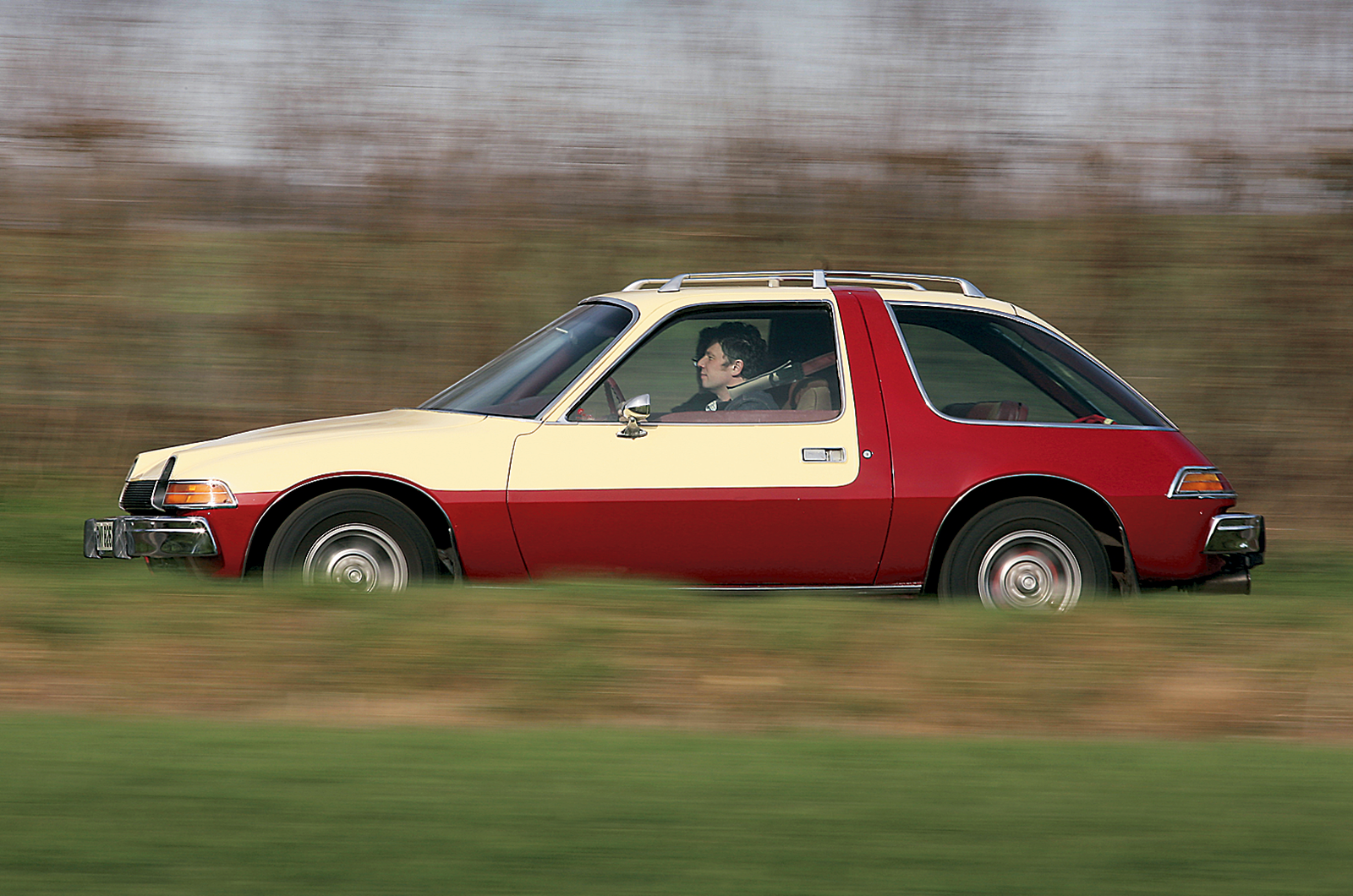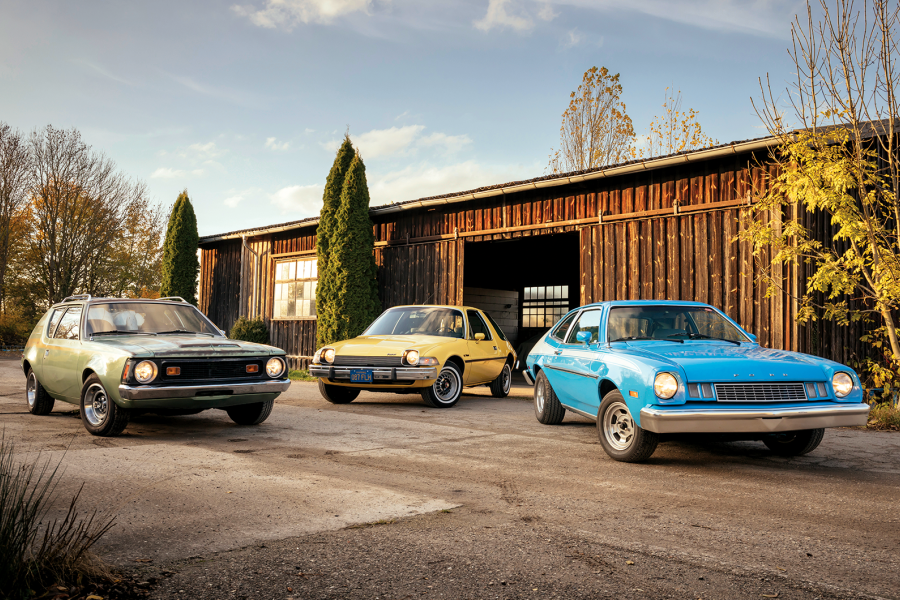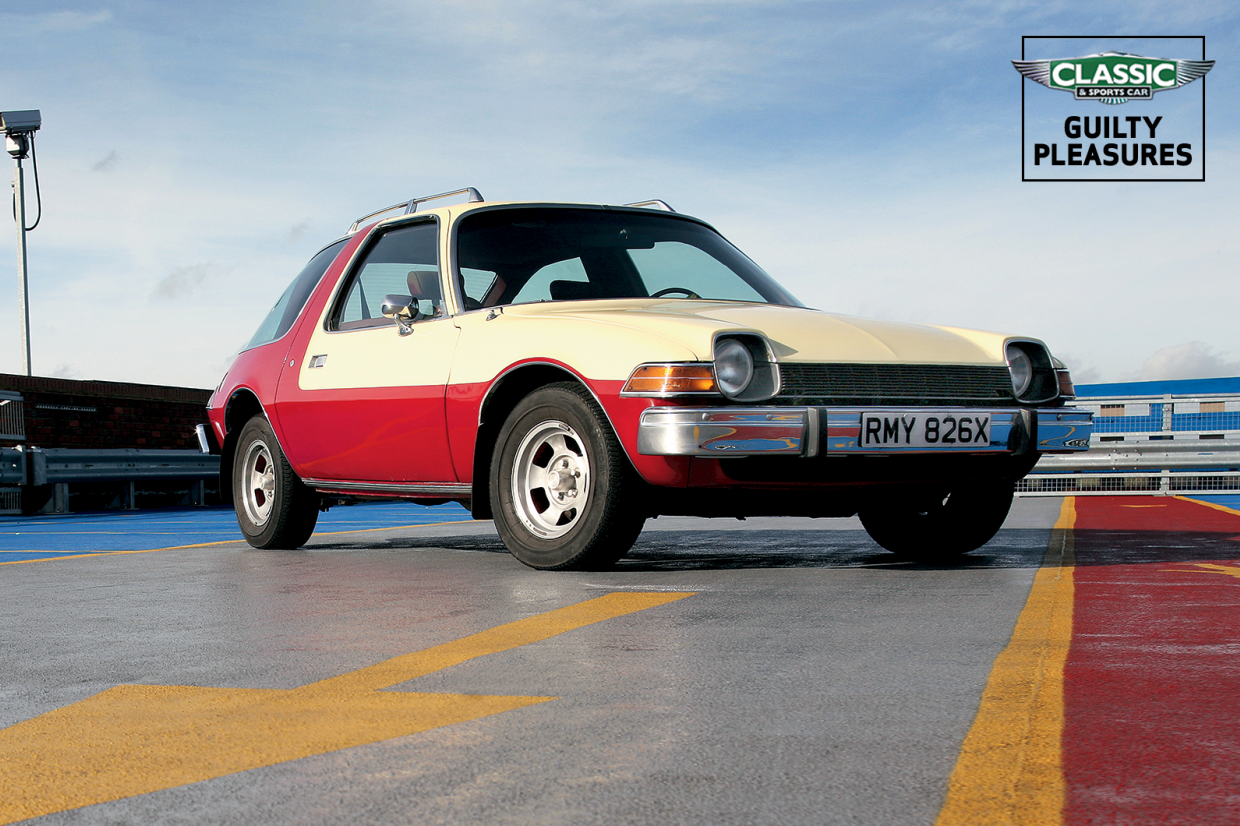
We might lazily brand Americans as lacking in irony, but the increasing fanbase of the AMC Pacer proves otherwise, its profile raised by film appearances as the archetypal geek/losers car.
Wayne’s World was its finest hour but the Pacer pops up in lots of other places, from David Byrne’s True Stories to Eminem videos.
I have long harboured a grim fascination for what was, without doubt, a truly dreadful automobile even by the standards of America’s so-called malaise era, aka the 1970s and ’80s.
The uncertainties of the mid ’70s in terms of emissions laws, rising fuel prices and safety legislation drove US car makers into a state of panic. Once a joke, small cars from Japan were now a threat to the domestic industry.
Cornered, Detroit responded with some of the worst and most cynical vehicles ever produced. A country that was feeling bad about itself in the wake of Vietnam and Watergate got the cars it felt it deserved.
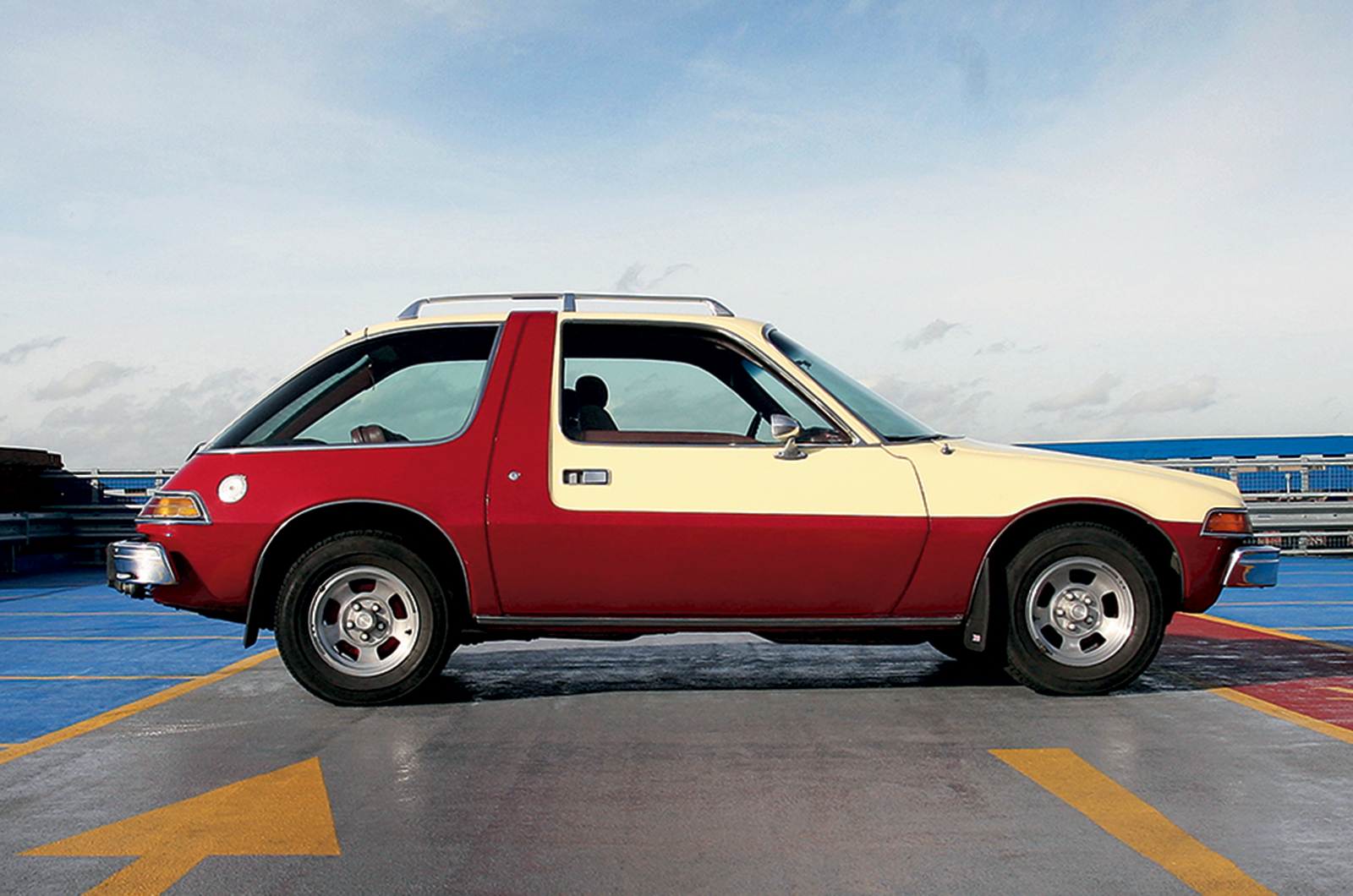
There’s something of the lunar vehicle about it
It was a depressing time for anyone who professed an interest in cars. In fact, in the context of cars such as the Ford Pinto and Chevrolet Vega, the much-derided AMC Pacer seems quite appealing.

